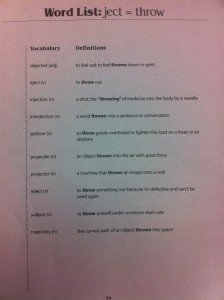May the 4th be with you!
I can’t believe some of our students haven’t seen Star Wars before. I mean really…….how am I supposed to make awful terrible worn-out jokes if half the class has never seen this staple of cinema before?
So we spent our morning doing some math centers, and then talking about multiplication with decimals using the standard algorithm. Essentially we have to be hyper-aware of what we are multiplying, so that we can tell where our decimal point should go. Are we multiplying tenths by tenths? Then we’ll get hundredths. Are we multiplying tenths by ones? We will get tenths. Are we multiplying tenths by tens? we’ll get ones.
Tonight students have a series of problems to do. They should do each of these problems with an area model, and also using the standard algorithm. There is a pattern to these problems that they should pick up on, and it should help them with their work.
When using the standard algorithm, they must tell me what their first place value is on their top line. Here is a page of examples we did together, and you can see where you must indicate the place value as you do the first step in the standard algorithm:
The problems they should do in this manner are:
1. 46 x 28
2. 36 x 75
3. 28 x 41
4. 52 x 33
5. 4.6 x 28
6. 3.6 x 75
7. 2.8 x 41
8. 5.2 x 33
9. 4.6 x 2.8
10. 3.6 x 7.5
11. 2.8 x 4.1
12. 5.2 x 3.3
Each should be done with an area model, and then using the standard algorithm, pointing out the place value of the first step of the standard algorithm.
In Language Arts we talked briefly about our family metaphor poems, and then metaphors in general. We discussed another type of ‘compacted’ metaphor: a kenning. A kenning is a much-compressed form of metaphor, originally used in Anglo-Saxon and Norse poetry. In a kenning, an object is described in a two-word phrase, such as ‘whale-road’ for ‘sea’. Some kennings can be more obscure than others, and then grow close to being a riddle. We made a little kenning poem about teachers by listing things that teachers do/how they act/what they look like/what they sound like. This was VERY telling by the way – yikes!
Tonight students should make their own 16 line (minimum) kenning poem. It should be riddle-like, and they may not repeat a word. They’ll have to really stretch their thinking and their vocabulary.
For example:
Egg layer
Insect betrayer
People scarer
Trap preparer
Silent creeper
Death reaper
Meal storer
Fly adorer
Duster hater
Web creator
Corner hider
Finally, we talked a bit about our new vocabulary list, especially stressing the parts of speech of each word. Tonight students should write a sentence for each of the first four words, and they MUST…BE…USED….CORRECTLY….IN….EACH…..SENTENCE.
no forgiveness for this!
so, tl;dr
12 decimal multiplication problems. Each should be done using an area model, then the standard algorithm.
1. 46 x 28
2. 36 x 75
3. 28 x 41
4. 52 x 33
5. 4.6 x 28
6. 3.6 x 75
7. 2.8 x 41
8. 5.2 x 33
9. 4.6 x 2.8
10. 3.6 x 7.5
11. 2.8 x 4.1
12. 5.2 x 3.3
Write a kenning poem riddle (minimum 16 lines). No word can be re-used
Write a sentence for the first 4 words on our new vocab list. Make sure you use them correctly!
As always, read for 35 minutes!
Have a good one,
-Mr. Potter
